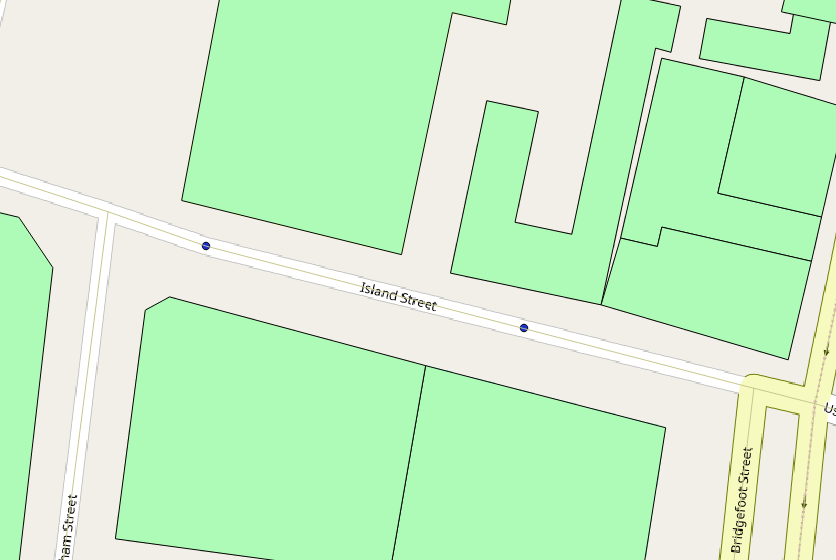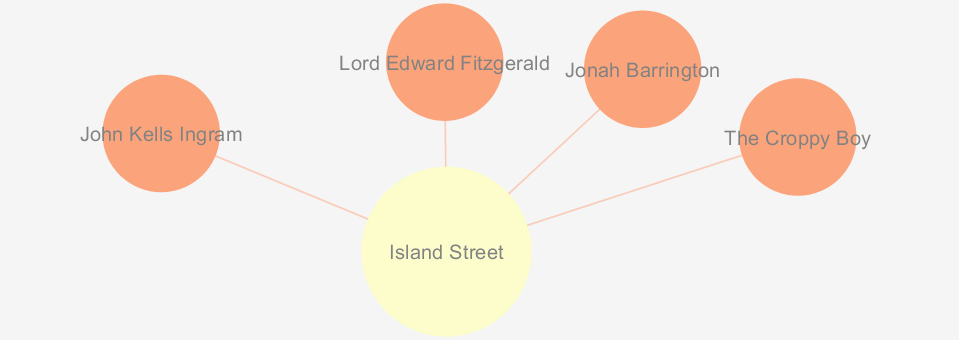Island Street
Map
The gray dots are on Island Street.

About this Location
Island Street is a street in Dublin, Ireland on the South Bank of the Liffey. It was referenced in the "Wanderings of Ulysses" section of Ulysses
Network Graph

Most Common References
In Island Street, references to John Kells Ingram, The Croppy Boy, Jonah Barrington, and Lord Edward Fitzgerald were made.
John Kells Ingram (1823-1907) was an Irish economist, Mathematician, historian, and poet.
The Croppy Boy is an Irish ballad about a doomed Irish rebel.
Jonah Barrington (1756-1834) was an Irish judge, politician, and lawyer.
Lord Edward Fitzgerald (1763-1798) was an Irish rebel who contributed to the 1798 rebellion against British rule in Ireland.
This Location in Ulysses
The four allusions made in Island Street are references primarily to Irish politics. Jonah Barrington is famous both for having rejected the Act of Union of 1800, which joined Ireland with the Kingdom of Great Britain, and for being ousted from his judiciary positions for financial mismanagement. Lord Edward Fitzgerald fought against British rule in Ireland in 1798 but died in prison after being wounded in the rebellion. John Kells Ingram, while famous as a poet, was also a well-known Irish economist who wrote against classical economics and the Poor Law and for positivist economics, which attempt to use economic policy for the betterment of society. Finally, The Croppy Boy is a ballad set in 1798 about the tragic death of an Irish rebel. In summary, the collusion of these four allusions say something about the apparent hopelessness of Ireland against British rule, or so Joyce may have thought when he wrote Ulysses